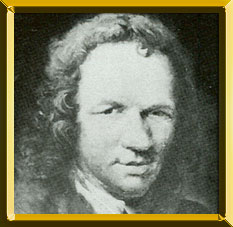
Although fisticuffs as a sport started in England about 40 years before his rise to prominence, James Figg is considered to have been the first heavyweight boxing champion. He was also the first to teach and promote boxing both as a skill and a competitive sport.
Six feet tall and a multi-talented athlete, Figg was an expert fencer and was a popular performer in fairs. He gained fame for his skill in exhibitions with the sword and the cudgel before adding bare knuckle fighting to his repertoire. By 1719, Figg’s claim to the bare knuckle championship was secure. He fended off several challengers, including three-time opponent Ned Sutton. Figg defeated Sutton with his fists, sword, and cudgel.
With the backing of a patron, the Earl of Peterborough, Figg opened a fighting academy in London on what is now known as Tottenham Court Road. His advertising card, designed for him by the artist William Hogarth, proclaimed him “master of the noble science of defence” and offered to teach gentlemen in the use of “the small backsword and quarterstaff at home and abroad.” Hogarth was a great friend of Figg’s and also painted a portrait showing the fighter in a lace shirt and wig, holding his clenched fists before him.
Figg later established Figg’s Amphitheatre in Oxford Road, one of several London arenas devoted to staging matches in the growing sport of prizefighting. In these permanent venues, the “ring” that had originally been formed by spectators, sometimes holding a rope in their hands, became an elevated square platform, enclosed with wooden rails. Figg popularized sparring as a public entertainment, and his school was frequented by the upper classes, with noblemen often arriving in groups to try their hand at boxing or fencing.
Since bare knuckle exhibitions were also tremendously popular with the working classes, Figg continued to make appearances in public, often at London’s Southwark Fair, in a boxing booth where he would take on all comers. Fighting infrequently in formal matches, Figg retained the championship until his retirement in 1734 when his premier student, George Taylor, declared himself successor to the title.
Figg, who socialized with the Prince of Wales and other members of the royal family, died in 1740, leaving a wife and several children. Although some considered him a better swordsman than boxer, Figg is called “The Father of Boxing” for his role in popularizing and teaching the sport.
* * *
Excerpted with permission from 'The Boxing Register' by James B. Roberts and Alexander G. Skutt, copyright © 1999 by McBooks Press. All rights reserved.
Born: 1695
Died: Dec. 8, 1734
Induction: 1992
James Figg
